This week leads to a new phase in my life…
This coming Saturday my youngest will turn 13 years old. I’ll officially have “
all teens” at home.
I’m excited! (And scared).
My youngest has already been eating almost as much as his brothers for a couple of years now. So not much new there.
Raising all boys, I’d say that cleaning is a never ending battle. But, such is the tale for all moms out there! 😉
I try to stay in “
Maintenance Mode” — which means I like to clean as I go… instead of setting aside a whole entire day for cleaning. Yet, sometimes, this doesn’t always work either. I get behind and have to set aside a few hours to “
catch up” with cleaning the house. Which is almost the state it is right now.
[SIDE NOTE: You can download or print this post or "send to Kindle" -- Find the utility buttons at the bottom]
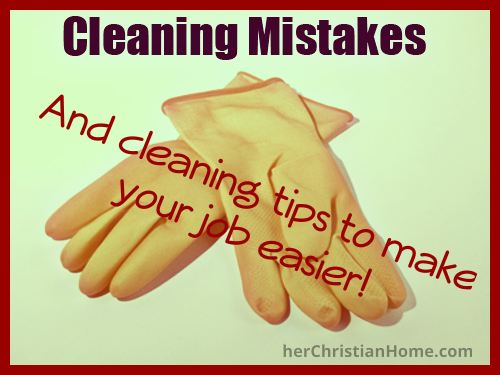
Did you know there’s a “wrong way” to clean some messes?
Cleaning the wrong way can lead to wasted time, frustration, more work and sometimes even repairs!
Who knew there was a wrong way? Knowing what not to do can save you from more than just time wasted.
Six Common Cleaning Mistakes to Avoid
1. Dusting after you vacuum – You’ll make more work for yourself doing it this way. Even with a new-fangled duster you will have particles flying through the air. Dust first, then vacuum.
2. Using more product than needed – It may seem like one capful or two cups is not enough, but when you use more than directed you’re asking for problems. First, the fumes from some cleaners can cause problems for allergy or asthma sufferers in your home. It could even knock you out. It also leaves more product to wash off. Have you ever tried to clear a sponge of soap or other project but it kept on bubbling? Residue may remain not only on sponges but on surfaces.
3. Scrubbing the carpet – If you have a spill, use a towel or a paper towel to
blot the excess moisture first. Then, use a stain remover and follow the directions on the bottle. Scrubbing or rubbing vigorously will result in a wooly-looking spot on your carpet where the fibers have unwoven.
4. Spraying furniture polish on surfaces – Instead of spraying directly on a surface, spray on the cleaning cloth you intend to use. Now, the cloth can collect dirt and trap it on a moist surface instead of making it fly up and then resettle once you’ve moved on to clean something else.
5. Not following package instructions – Ever wonder why you don’t get the results you desire sometimes? It could be because you didn’t follow the instructions. They are there for a reason so use them. Also note, that often the instructions will state to spray and then “wait 10 minutes” or so before cleaning. This is to give it time to break up the residue. You’re making more work for yourself when you get impatient and start cleaning too soon.
6. Cleaning windows on sunny days – The sun will dry the cleaner faster than you can wipe. It will leave a streaky finish after all your hard work.
Eight Hidden Spots Where Germs Collect
Germs are everywhere. Some are harmless enough but others are not.
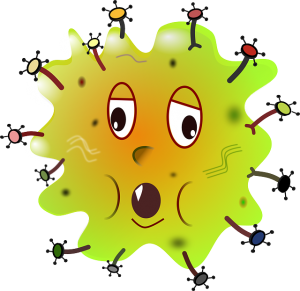
I’m not suggesting to develop “
germ phobia“… but taking precautions, especially during cold and flu season can certainly help avoid sickness.
It might be a good idea to keep travel wipes handy in the car.
Let’s take a peek where germs might be hiding…
Eight Spots Where Germs Collect
1. Cell phones – You keep it with you all day, every day. It sits on the counter, in your purse or pocket and if you use touch phones then your fingers make all sorts of prints on it. Take a look at your screen sometime. It may disgust you. Wipe it down daily.
2. Headphones – Sharing earphones could be the worst thing you can do unless you clean them first. Who wants someone else’s ear goo in their ears? There is sweat and dirt also, especially if you have been working out.
3. Gas pump handles – You’re not the only one that uses them. Imagine where those hands have been. If your gas station doesn’t offer plastic gloves, use hand sanitizer after handling the pump.
4. Purse – It sounds awful, but let’s think about it for a minute. You carry your purse everywhere you go: to the bathroom, to the grocery store, in the lunchroom, restaurants and the like. Once you have sat your purse on a potentially germy surface, it’s contaminated. Sitting it on your kitchen table transfers those germs to the surface where you and your family eat. Use a mild fabric cleaner to clean the outside and inside of your purse.
5. Shower curtain – Just because water washes over it doesn’t make it clean. Over time, soap scum that builds up on your shower curtain makes it feel slimy and look cloudy. On a microscopic level, germs are congregating in large numbers. Breathing in these bacteria in a hot shower can make you sick.
6. ATM machines – Several people punch those keys each day. Just like you don’t know where the hands that touch the gas pump have been, the same goes for the ATM machine. Use hand sanitizer after pushing the buttons.
7. Credit cards – That card you push into the ATM machine is also handled by numerous store clerks and cashiers throughout the day. Give it a rest and wipe down the front of it with an alcohol wipe. Let it air dry before putting it back in your wallet.
8. Shopping carts – Hundreds of people handle them every day. Just holding on to that handle can transfer tons of germs to your hands. Use the sanitary wipes found in most grocery stores to clean it before touching it.
Five All-Natural Stain Busters
Even the smallest stain can ruin a good piece of furniture, clothing or a rug.
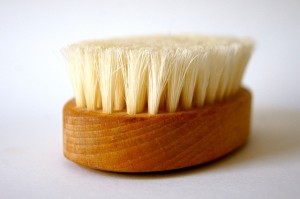
Unfortunately, it’s impossible to avoid all spills and the stains they cause.
Instead of getting bent out of shape over them, learn how to treat them successfully.
Many times stains are taken care of the wrong way, which makes them even harder to remove.
How Not to Treat Stains
* Don’t apply any heat – Heat sets stains. Once you have placed your clothing in the dryer or rinsed with hot water, the stain becomes more permanent.
* Never rub a stain – Rubbing actually grinds the stain into the surface where you want to remove it. For rugs, rubbing makes the pile look shaggy. It can also unravel the individual fibers.
* Don’t rush the treatment – Nothing is instantaneous. Allow the stain-removing product to work for at least 30 minutes before proceeding with the next step.
* Don’t ignore it – Treat stains as soon as possible to prevent them from setting in the fabric. Always put something on it to break down the stain right away, even if you are out in public. It’ll save your outfit from being ruined.
Five All-Natural Stain Busters
1. White vinegar – This is a natural disinfectant. It can be used in a variety of ways. For stains on carpets, mix it with water (1:8) and apply to the stain. The vinegar will begin to lift it out. It is an odor fighter as well. Whatever the stain, it will help to neutralize the odor.
2. Liquid soap – This is good for more than just cleaning your hands. This little beauty is great for several kinds of stains. If you drop food on your clothing, dab a bit of that liquid soap on it to keep the stain from setting.
3. Liquid dish soap – Just like it removes tough stains from dishes, it can do the same on other surfaces and with fabrics. Before you put clothing in the washing machine, treat stains with liquid dish soap instead of investing in a pre-treating solution. Got grass stains? Again, dab a bit of dish soap on it and let it sit.
4. Hydrogen peroxide – It’ll bleach your hair among other things. When using it for stain removal, be careful. Try using it in an inconspicuous place first to see if there are any problems. It can be used to remove old stains from clothing when combined with an equal part of water. Use it in the wash before adding white clothes to brighten them and remove stains. Use the same 50/50 mixture to remove red dye stains.
5. Baking soda – It freshens the fridge and your clothing. Remove coffee stains with a mixture of baking soda and white vinegar. It can also help remove oily stains from fabric when mixed with water.
Top Five Multipurpose Cleaners
How many cleaners are under your kitchen or bathroom cabinet right now?
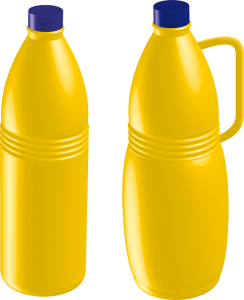 If you have more than two or three, then you have too many
If you have more than two or three, then you have too many.
Too many chemicals around the house could lead to mixing smells that might knock you out.
Using multipurpose cleaners eliminates the need for tons of bottles and added chemicals in the house.
They’re designed to do the job of several in one bottle.
Usually less chemicals are needed when dealing with multipurpose cleaners. And, because they clean more than one surface, they are stronger than some single use products. Again, be sure to follow directions carefully to get the most benefit safely.
Top Five Multipurpose Cleaners
1. Mr. Clean Antibacterial Multi-Purpose Spray – This product has been around for many years and still fighting grease and grime with the best of them. Mr. Clean cleans away dirt and kills germs on just about all surfaces in your home. Try it on your patio furniture.
2. Windex Multi-Surface Cleaner with Vinegar – Windex is not just for streak-free windows anymore. Vinegar is a natural cleanser that disinfects while it gets rid of stains. When it’s combined with Windex, use it to clean countertops, mirrors, windows (of course) and more. Use it on laminate surfaces, stainless steel and walls.
3. Lysol All Purpose Cleaner – Lysol is a name synonymous with household cleaning. With this bottle you get a four-in-one product that cleans dirt, grease, grime and disinfects surfaces to cut down on illness in your home. Use it in the kitchen and the bathroom to clean floors and cut grease on appliances, countertops and sinks.
4. Cinch Glass & Multi-Surface Cleaner – This product is from the makers of Spic and Span. It does what is says and cleans in a cinch. Not only does it clean glass but also stainless steel. Use it on all types of dirt and watch the mess disappear.
5. Fantastik Orange Action All Purpose Cleaner – The power of orange works well on wood flooring and on other surfaces as well. Orange Action is a degreaser that can be used for the kitchen and bathroom, appliances, flooring and sinks.
Bonus Tips: DIY Home Repairs Anyone Can Make
Who says that you always have to call the professional to get the job done around the house? It’s costly, right!?!
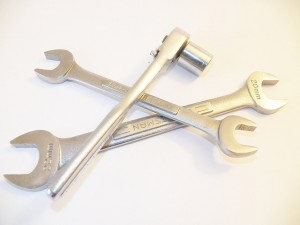
With certain projects, the only thing you need is a little knowledge and some elbow grease.
Learn how to tackle simple home repair jobs on your own.
As long as you understand the ins and outs of the repair, it can often be taken care of in just a few hours.
Assess the issues in your home that need attention and then decide if you can do it or if the big guns need to be called in.
Six DIY repairs you can make
1. Cleaning grout – White grout especially gets dingy over time because it’s so porous. To fix it, clean away the dirt and then use grout ink to brighten it up as good as new. Find what you need at a hardware or home improvement store.
2. Fixing the toilet – Toilets can break down. First, learn how they work so you can effectively diagnose the problem. If a toilet is constantly running, the flapper valve inside more than likely needs to be replaced. Blocked toilets can be unblocked with a toilet snake and a plunger. It could also be that there is a clog. Look below the rim using a dental mirror. Use a small tool to scrape away substances that clog the holes on the inside of the toilet.
3. Broken light switches – If the face plate is cracked or you need another switch, don’t call someone else. Do it yourself. Turn off the power to that particular switch so you don’t get electrocuted. Use a screwdriver to remove the face plate. Place a new one over the circuit. If you need to replace the switch, remove two more screws and the switch and then install the new one and reconnect everything.
4. Squeaky door – If a hinge is making noise, remove the offending pin and oil it with WD-40 or Vaseline. Replace the pin and then try opening and closing the door again.
5. Install a ceiling fan – If you already have a light in the ceiling, you can install a ceiling fan that has light fixtures attached. Again, turn off the electricity to that particular outlet to avoid electrocution. Remove the light that is already there and install the new mounting bracket. Assemble the rest of your ceiling fan on the floor before attempting to attach it to the bracket. Reconnect the wires that were connected to the original light. Turn the power back on.
6. Gutters – Clean them out periodically to keep water from running off the sides of the house and causing damage to the windows or walls. Use a brush to remove leaves and other debris. If a downspout is damaged, remove that piece and replace it in minutes.
_________________________________________________________


In order to clean a surface, you don’t have to use harmful chemicals. They can harm your family and your pets. And, leave residue on the surfaces. For a better result, try
Method All Purpose Natural Surface Cleaner. It uses natural substances to bring a look of clean to all your household surfaces.
All purpose means that your new surface cleaning product can be used for many different kinds of messes. It is safe for non-porous surfaces like stainless steel, ceramic, sealed wood, marble, tile and granite. Clean appliances, your bathroom and the kitchen sink with
Method All Purpose Natural Surface Cleaner. While you’re cleaning you don’t have to think about breathing in potentially toxic fumes.
This all purpose cleaner includes
ingredients made from soda ash, corn and coconut derived surfactants, fragrance oil, purified water, potassium hydrate, an emulsifier and coloring. It is non-toxic. The bottles that the cleaner comes in are 100 percent recyclable plastic.
The
fragrance of this particular variety is pink grapefruit. As you clean, your home is left with a pleasant citrusy scent. Know that your home is clean, fresh smelling and that you are doing something to help the environment.
_________________________________________
*Disclaimer: Affiliate links are used on HCH. Thank you for your support!]]>

 I’m not suggesting to develop “germ phobia“… but taking precautions, especially during cold and flu season can certainly help avoid sickness.
It might be a good idea to keep travel wipes handy in the car.
Let’s take a peek where germs might be hiding…
I’m not suggesting to develop “germ phobia“… but taking precautions, especially during cold and flu season can certainly help avoid sickness.
It might be a good idea to keep travel wipes handy in the car.
Let’s take a peek where germs might be hiding…
 Unfortunately, it’s impossible to avoid all spills and the stains they cause.
Instead of getting bent out of shape over them, learn how to treat them successfully.
Many times stains are taken care of the wrong way, which makes them even harder to remove.
Unfortunately, it’s impossible to avoid all spills and the stains they cause.
Instead of getting bent out of shape over them, learn how to treat them successfully.
Many times stains are taken care of the wrong way, which makes them even harder to remove.
 If you have more than two or three, then you have too many.
Too many chemicals around the house could lead to mixing smells that might knock you out.
Using multipurpose cleaners eliminates the need for tons of bottles and added chemicals in the house.
They’re designed to do the job of several in one bottle.
Usually less chemicals are needed when dealing with multipurpose cleaners. And, because they clean more than one surface, they are stronger than some single use products. Again, be sure to follow directions carefully to get the most benefit safely.
If you have more than two or three, then you have too many.
Too many chemicals around the house could lead to mixing smells that might knock you out.
Using multipurpose cleaners eliminates the need for tons of bottles and added chemicals in the house.
They’re designed to do the job of several in one bottle.
Usually less chemicals are needed when dealing with multipurpose cleaners. And, because they clean more than one surface, they are stronger than some single use products. Again, be sure to follow directions carefully to get the most benefit safely.
 With certain projects, the only thing you need is a little knowledge and some elbow grease.
Learn how to tackle simple home repair jobs on your own.
As long as you understand the ins and outs of the repair, it can often be taken care of in just a few hours.
Assess the issues in your home that need attention and then decide if you can do it or if the big guns need to be called in.
With certain projects, the only thing you need is a little knowledge and some elbow grease.
Learn how to tackle simple home repair jobs on your own.
As long as you understand the ins and outs of the repair, it can often be taken care of in just a few hours.
Assess the issues in your home that need attention and then decide if you can do it or if the big guns need to be called in.


